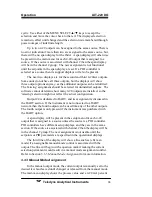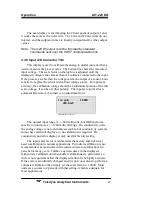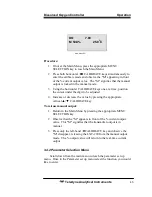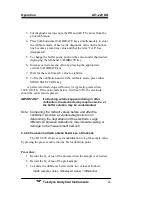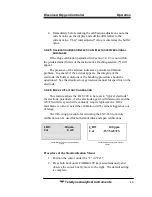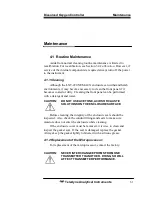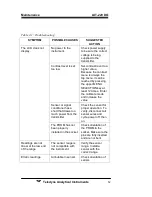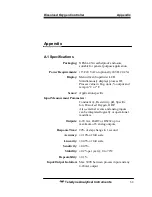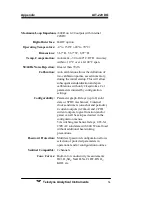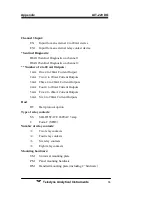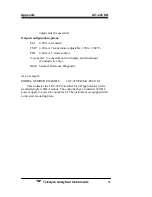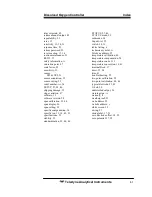
Operation
LXT-220 DO
Teledyne Analytical Instruments
48
3.
For diagnostic reasons note the DO and mV/FS values from the
prior calibration.
4.
Press both horizontal CALIBRATE keys simultaneously to enter
the calibrate mode. Observe the diagnostic value on the bottom
line becomes a real-time value and that the term "CAL" has
disappeared.
5.
To change the buffer point, position the cursor under the desired
digit using the left-hand CALIBRATE key.
6.
Increase or decrease the value by pressing the appropriate
vertical CALIBRATE key.
7.
Wait for the real-time mV value to stabilize.
8.
To file the calibration and exit the calibrate mode, press either
MENU SELECTION key.
A perfect electrode slope (efficiency) is typically greater than -
150.0 mV/FS. If the value falls below -100.0 mV/FS, the electrode
should be serviced or replaced.
IMPORTANT: If a flashing asterisk appears during or after
calibration, the electrode may require service, or
the buffer solution may be contaminated.
Note: Comparing the millivolt values before and after the
calibration provides a valuable diagnostic tool in
determining the degradation of the electrode. Large
differences between calibrations may indicate coating or
damage to the measurement half-cell.
3.4.2.4 C
ALIBRATION
U
SING A
G
RAB
S
AMPLE AS A
S
TANDARD
The LXT-220 allows easy standardization to a grab sample value
by placing the process value into the first calibration point.
Procedure:
1.
Record the O
2
value of the process when the sample is extracted.
2.
Record the O
2
value of the grab sample.
3.
Calculate the difference between the two values as follows:
(Grab sample value) - (Displayed value) = differential



